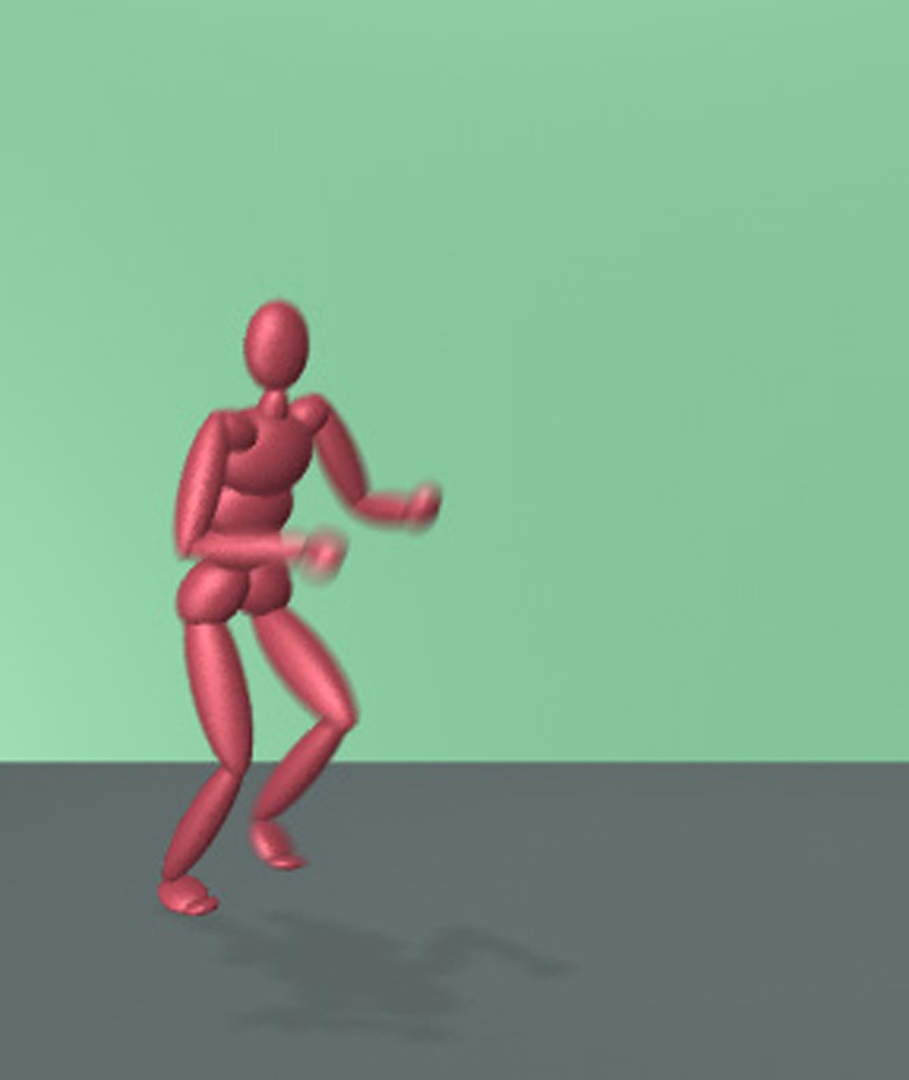“Perceptual metrics for character animation: sensitivity to errors in ballistic motion” by Reitsma and Pollard
Conference:
Type(s):
Title:
- Perceptual metrics for character animation: sensitivity to errors in ballistic motion
Presenter(s)/Author(s):
Abstract:
Motion capture data and techniques for blending, editing, and sequencing that data can produce rich, realistic character animation; however, the output of these motion processing techniques sometimes appears unnatural. For example, the motion may violate physical laws or reflect unreasonable forces from the character or the environment. While problems such as these can be fixed, doing so is not yet feasible in real time environments. We are interested in developing ways to estimate perceived error in animated human motion so that the output quality of motion processing techniques can be better controlled to meet user goals.This paper presents results of a study of user sensitivity to errors in animated human motion. Errors were systematically added to human jumping motion, and the ability of subjects to detect these errors was measured. We found that users were able to detect motion with errors, and noted some interesting trends: errors in horizontal velocity were easier to detect than errors in vertical velocity, and added accelerations were easier to detect than added decelerations. On the basis of our results, we propose a perceptually based metric for measuring errors in ballistic human motion.
References:
1. BINGHAM, G. P. 1987. Kinematic form and scaling: Further investigations on the visual perception of lifted weight. Journal of Experimental Psychology: Human Perception and Performance 13, 2, 155–177.Google ScholarCross Ref
2. HECHT, H., AND BERTAMINI, M. 2000. Understanding projectile acceleration. Journal of Experimental Psychology: Human Perception and Performance 26, 2, 730–746.Google ScholarCross Ref
3. HODGINS, J. K., O’BRIEN, J. F., AND TUMBLIN, J. 1998. Perception of human motion with different geometric models. IEEE Transactions on Visualization and Computer Graphics 4, 4 (October), 307–316. Google ScholarDigital Library
4. KAISER, M. K., PROFFITT, D. R., WHELAN, S. M., AND HECHT, H. 1992. Influence of animation on dynamical judgments. Journal of Experimental Psychology: Human Perception and Performance 18, 3, 669–690.Google ScholarCross Ref
5. LEVITT, H. 1971. Transformed up-down methods in psychoacoustics. Journal of the Acoustical Society of America 49, 467–477.Google ScholarCross Ref
6. MACMILLAN, N. A., AND CREELMAN, C. D. 1991. Detection Theory: A User’s Guide. Cambridge University Press, New York.Google Scholar
7. MICHAELS, C. F., AND DE VRIES, M. M. 1998. Higher order and lower order variables in the visual perception of relative pulling force. Journal of Experimental Psychology: Human Perception and Performance 24, 2, 526–546.Google ScholarCross Ref
8. OESKER, M., HECHT, H., AND JUNG, B. 2000. Psychological evidence for unconscious processing of detail in real-time animation of multiple characters. Journal of Visualization and Computer Animation 11, 105–112.Google ScholarCross Ref
9. O’SULLIVAN, C., AND DINGLIANA, J. 2001. Collisions and perception. ACM Transactions on Graphics 20, 3 (July), 151–168. Google ScholarDigital Library
10. PROFFITT, D. R. 1999. Naive physics. In The MIT Encyclopedia of the Cognitive Sciences, R. Wilson and F. Keil, Eds. MIT Press, 577–579.Google Scholar
11. RUNESON, S., AND FRYKHOLM, G. 1981. Visual perception of lifted weight. Journal of Experimental Psychology: Human Perception and Performance 7, 4, 733–740.Google ScholarCross Ref
12. STAPPERS, P. J., AND WALLER, P. E. 1993. Using the free fall of objects under gravity for visual depth estimation. Bulletin of the Psychonomic Society 31, 2, 125–127.Google ScholarCross Ref
13. WATSON, B., FRIEDMAN, A., AND MCGAFFEY, A. 2001. Measuring and predicting visual fidelity. In Proceedings of ACM SIGGRAPH 2001, ACM Press / ACM SIGGRAPH, New York, Computer Graphics Proceedings, Annual Conference Series, ACM, 213–220. Google Scholar





